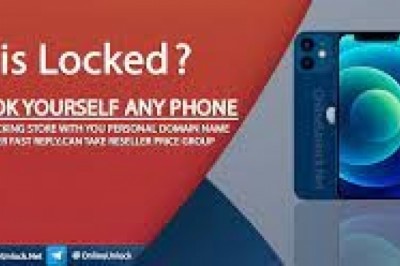views

Email remains one of the most powerful marketing channels and it’s here to stay. According to stats, for every $1 spent, email delivers an average return of more than $32!
And apparently, marketers are well aware of this fact. The Email Marketing Census by Econsultancy found that nearly 75% of them ranked email as an excellent marketing channel, compared to 67% for paid search and 72% for SEO.
But there’s a catch. Usually, it takes more than just one type of email to hook and retain your target audience. If you want to create a successful marketing campaign for your e-store, you need to include a variety of emails. Because, when it comes to e-commerce email marketing, the focus is on building customer loyalty rather than directly selling your products.
Sounds complicated? It’s not, actually. Especially if you’re using a good email automation tool. Having an automation tool like GMass will make the whole process a lot easier by helping you send emails to thousands of email addresses at once, allowing you to mail merge with data from Google Sheets, schedule mass emails to be sent later, personalize emails based on name and email address, track opens and clicks, etc.
To help you out, we’ve compiled a list of 7 types of emails every e-commerce owner must include in their strategy.

1. Welcome Emails
Are welcome emails even effective? You bet. According to Campaign Monitor, welcome emails are the most effective triggered email types for e-commerce, along with cart-abandonment emails.
- Welcome emails have a 42% higher read rates than the average email;
- Welcome emails can increase the unique open rate by more than 85%;
- Welcome emails have an open rate of more than 90%.
When a customer opens an account on your site, sending them a welcome email is a great way to assure them that they’ve made the right choice. Welcome mails make customers feel special as they provide company highlights and information in a personalized way.
2. Referral Emails
Inviting customers to refer family and friends to your brand is an excellent source for free leads.
According to recent surveys, nearly 75% of consumers consider word-of-mouth to be the most important influencer in their buying decision.
For that reason, you need to start asking for referrals in your emails.
Make sure to provide clear and detailed instructions in your email but, more importantly, don’t forget to offer an incentive (it can be anything from a pair of socks to a small sum of money coming from your marketing budget).
3. Cart Abandonment Emails
According to statistics, nearly 70% of all e-commerce visitors tend to abandon their shopping cart, with more than 60% of them pointing at shipping costs as no.1 reason for doing so.
So, what can be done? You can try turning cart abandoners into buyers by offering free shipping in a cart recovery email. However, if you can’t afford to offer free shipping (or any other kind of discount) in order to incentivize cart completion, maybe you should consider improving the checkout process to reduce cart abandonment in the future.
4. Discount Emails
Discounting is definitely an effective marketing strategy and here’s why: Nearly 55% of shoppers are very likely to buy abandoned products if they are offered again at a lower price.
So, make sure to offer discounts to your subscribers to entice more purchases (and even emphasize product scarcity to evoke FOMO, why not?). But be careful: in order for your discounting strategy to be effective, you have to find the perfect balance. Offering discounts too frequently can have a negative effect on your profits, whereas offering them too little might drive your customers to the competition. So, what’s the middle ground? Consider offering discounts only to the customers who engage with your emails.
5. Upsell & Cross-Sale Emails
Upselling emails invite prospects to buy a more expensive item in an attempt to boost their average order value, whereas cross-selling emails recommend complementary or related products.
As with cart abandonment emails, relevance and timing are key factors here. A message with product recommendations that are relevant to the customer, and delivered at the right time can yield awesome results. Use the shopper’s website browsing and purchase history to pull out intelligent recommendations into an email. In addition, you can add targeting rules and filters to your campaigns, including trigger time.
6. Order Confirmation Emails
According to email marketing statistics, every order confirmation email earns $0.25 of extra revenue for e-commerce stores. This means that for every hundred receipts sent, you make about $25 with zero effort!
Besides being a great way to increase sales, order confirmation emails also help set customer expectations. For instance, you can use them to describe your ordering process or simply remind customers that doing business with you was a good decision.













